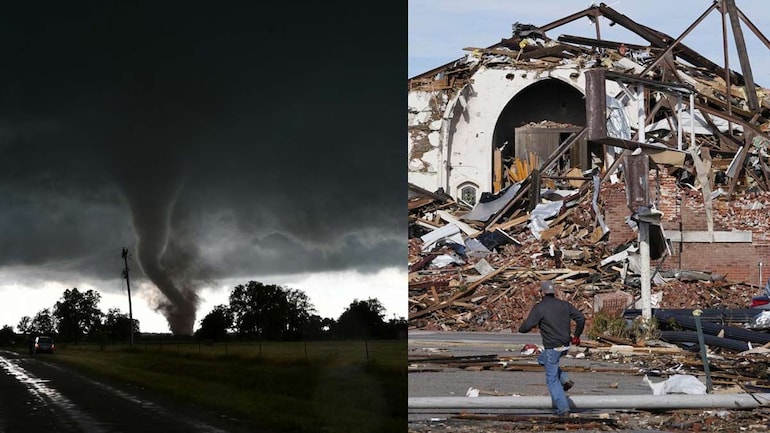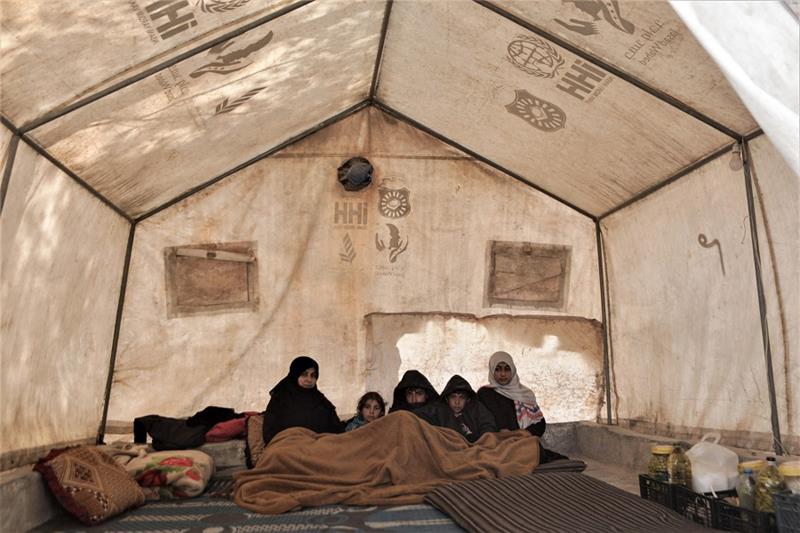Sat, December 11, 2021,

Nico Ali Walsh lands a punch in his middleweight victory over Reyes Sanchez at Madison Square Garden (AFP/Sarah Stier)
Nico Ali Walsh won his third fight of 2021 with a majority decision over the previously unbeaten Reyes Sanchez in a non-title middleweight fight on Saturday at Madison Square Garden in New York.
Ali Walsh, the grandson of Muhammad Ali, has been busy in the ring since turning pro four months ago. He improved to 3-0 by winning the four-round fight on two of the three judges' scorecards. One judge gave Ali Walsh all the rounds while another scored it even, 38-38. The third judge had it 39-38.
Ali Walsh said he was thrilled to be fighting in the iconic arena where his grandfather battled Joe Frazier for the heavyweight championship in March 1971.
"It is amazing," the 21-year-old Ali Walsh said. "This (Garden) is a piece of history. Just to be in here, let alone fighting here, is a big honor."
Ali Walsh easily won the first round, backing up Sanchez by letting his hands go and landing combinations. He hit Sanchez with a solid overhand right late in the second round that hurt the fellow American fighter. Sanchez managed to finish the second round and then delivered his best round of the fight in the third.
Ali Walsh tried to get the knockout in the fourth but Sanchez proved to be a evasive target as the fight went to the scorecards.
Ali Walsh beat Jordan Weeks by a TKO in his pro debut in August in Tulsa, Oklahoma. Two months later he won by another TKO over James Westley in Atlanta.
gph/bb
Andrew MCKIRDY
Sat, December 11, 2021

Naoya Inoue (left) battles to victory over Nonito Donaire in an epic 2019 World Super Series final (AFP/Kazuhiro NOGI)
Naoya Inoue's nickname is "Monster" and with good reason -- he is regarded as one of boxing's best pound-for-pound fighters and has won all his 21 bouts, 18 by knockout.
The reigning WBA and IBF bantamweight world champion made his Las Vegas debut last year with a typically devastating knockout win and fights back home in Japan for the first time in two years on Tuesday.
Thailand's Aran Dipaen is expected to pose few problems at a sumo hall in Tokyo for the ferocious-punching 28-year-old Inoue, who has set his sights on unifying all four major bantamweight belts next year.
"I want to win in a way that completely exceeds expectations," Inoue said ahead of the fight with Dipaen, the IBF's sixth-ranked challenger, who has a 12-2 record with 11 knockouts.
"I don't want to let him touch me. I don't want to let him even graze me."
Inoue, who comes from a boxing family, burst on to the scene as an amateur and has blitzed his way through opponents since turning professional in 2012.
Although he is a star in Japan, his limited exposure in the US means he is still something of an enigma overseas.
After knocking out Australia's Jason Moloney in the seventh round of an eye-catching Las Vegas debut in October 2020, he returned there in June this year to dispatch Michael Dasmarinas of the Philippines inside three rounds, again by KO.
Veteran American promoter Bob Arum -- who signed Inoue to his Top Rank stable to fight in the US -- had no doubts the Japanese fighter is set for global stardom.
"Naoya Inoue is a generational talent, the sort of fighter who comes around once a decade," said Arum -- who has worked with greats from Muhammad Ali to Manny Pacquiao in a legendary career spanning half a century.
"He will be a major star stateside in no time. You are looking at an all-time great who is entering the prime of what will be a historic career."
 Inoue took up boxing at an early age.
Inoue took up boxing at an early age.His father Shingo is a former amateur while his younger brother Takuma is a fellow professional with a 15-1 win-loss record and has held the WBC interim bantamweight title.
Naoya Inoue started his career at light flyweight, capturing the WBC crown in only his sixth professional fight.
He vacated the title to challenge Argentine WBO super flyweight champion Omar Narvaez, and knocked him out in the second round.
Inoue moved up to bantamweight and claimed the WBA belt in his first title fight, before winning the World Boxing Super Series in November 2019.
His epic final victory over Filipino veteran four-weight world champion Nonito Donaire in a brutal contest was voted fight of the year by the Boxing Writers Association of America.
It was the first time Inoue had been seriously tested in his professional career.
He suffered a fractured right eye socket and double vision early in the fight before battling back to floor Donaire in the 11th round and seal a unanimous points win.

- Quiet perfectionist -
Dipaen is unlikely to give him a similar workout in Tokyo, but stronger challenges lie ahead as Inoue eyes a bout against another Filipino, WBO champion John Riel Casimero, next year.
Inoue is a perfectionist who regularly proclaims himself unsatisfied with his performances, even after blowing opponents away.
He might be a "monster" in the ring, but Inoue is quiet and mild-mannered away from boxing. He married his childhood sweetheart and has three children.
Inoue has ambitions of a move up in weight class once he has finished steamrolling the bantamweight division.
Inoue's focus remains solely on a successful defence of his WBA and IBF belts on Tuesday.
"There are lots of expectations on me for this fight, but if I get caught up in the atmosphere, where everyone wants me to knock him out early, I won't actually be able to box," local media quoted him as saying of the Dipaen contest.
Whatever lies ahead, should he win as expected, Inoue will continue to do it his way.
"I want to approach each match the same, regardless of who my opponent is," he said. "You have to keep a cool head."
amk/pst/dh


















